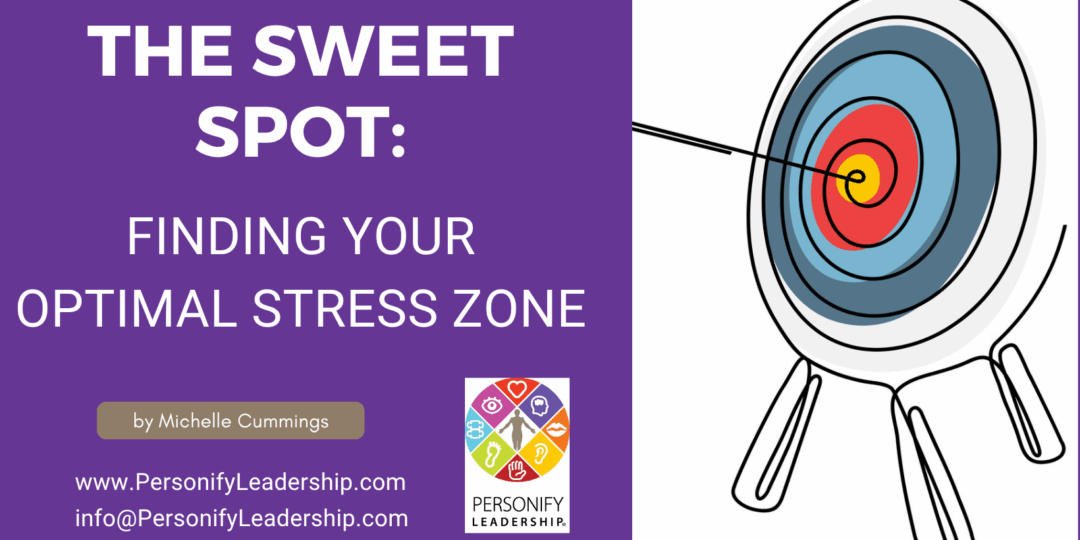Be Present, Be Clear: The Power of Active Listening in Communication
- Jul 03, 2025
- By personifyadmin
- In Newsletters
- 0 Comments
by Michelle Cummings
Communication is more than talking. It’s a two-way process that requires both clarity from the sender and presence from the receiver. But too often, we focus on crafting the perfect message and forget that communication only succeeds if someone truly hears it. That’s where active listening makes all the difference.
The classic sender-receiver model reminds us that every message travels through a channel – and every channel has noise. In modern workplaces, that noise is everywhere: notifications, emails, multitasking, and mental distractions. As a result, messages often get distorted or lost before they land. Active listening is the skill that cuts through that noise.
(more…)Leading with Openness: How to Become Someone People Can Talk To
- Jul 01, 2025
- By personifyadmin
- In Newsletters
- 0 Comments
Leadership is not just about making decisions or driving performance. It’s also about being someone people can approach. When team members feel safe bringing concerns or feedback to you, it means they trust you. That trust is a powerful advantage, but it doesn’t happen by accident.
Leaders often say, “My door is always open.” But that door is only truly open if people believe it’s safe to walk through. If team members fear being judged, ignored, or punished for speaking up, they will choose silence. And silence can be costly. Small problems grow. Resentment builds. Innovation stalls.
(more…)The Sweet Spot: Finding Your Optimal Stress Zone
- Jun 26, 2025
- By personifyadmin
- In Newsletters
- 0 Comments
by Michelle Cummings
We often talk about stress as a negative. Something to avoid, manage, or eliminate. But not all stress is bad. In fact, some stress is essential. It gives you focus, urgency, and the energy to perform. The problem is not stress itself – it’s how much of it you’re carrying.
There’s a name for this idea: the Yerkes-Dodson Law. It describes how performance increases with stress up to a certain point – then drops sharply when stress gets too high. On one side of the curve is overload and burnout. On the other is underload: the often-overlooked zone of too little stress. It’s when you feel unmotivated, bored, or disconnected.
(more…)Check for Clarity Before You Act
- Jun 24, 2025
- By personifyadmin
- In Newsletters
- 0 Comments
In fast-moving workplaces, it is tempting to hear part of a message, make an assumption, and act right away. While this can feel efficient, it often leads to misunderstandings, rework, and frustration. Taking a moment to confirm you understand the other person’s message can prevent unnecessary mistakes and strengthen trust.
Checking for clarity is a simple habit with a big payoff. It starts with active listening, giving your full attention to what is being said. Then, before responding or taking action, you restate what you heard in your own words and ask if you have it right. This step ensures you are acting on accurate information.
(more…)Finding Balance in the Middle
- Jun 21, 2025
- By personifyadmin
- In Newsletters
- 0 Comments
Being in the middle of an organization comes with unique challenges. You are accountable to senior leadership while also supporting the needs of your team. At times, those priorities align perfectly. Other times, they pull in opposite directions, leaving you feeling stretched and stuck.
Recognizing when you are caught in these “middle” dynamics is an important leadership skill. Without awareness, you can end up reacting to the loudest voice or the most urgent demand, rather than making balanced decisions that serve both sides effectively.
(more…)Leading with Alignment: When Good Intentions Meet Real Impact
- Jun 19, 2025
- By personifyadmin
- In Newsletters
- 0 Comments
by Michelle Cummings
Most leaders want to do the right thing. They care about their people. They want to see the organization succeed. But intention alone isn’t enough. Leadership happens in the space between intention and impact – and that space can get messy. The key is regularly asking: “Does my behavior match the outcomes I’m trying to create?”
It’s easy to drift. Under pressure, we default to habits or react in ways that may not serve the team’s needs or the broader mission. You might mean to empower, but come off as controlling. You might intend to support, but end up micromanaging. Without regular reflection, even well-meaning actions can lead to unintended outcomes.
(more…)From Vision to Action: Turning Big Ideas into Measurable Steps
- Jun 17, 2025
- By personifyadmin
- In Newsletters
- 0 Comments
A compelling vision can inspire and unite a team, but without a plan, it stays a dream. Leaders who know how to translate vision into actionable goals create a bridge between aspiration and achievement. That bridge is built step by step, with goals that are clear, specific, and trackable.
Breaking down a vision starts with clarity. Ask yourself: What does success look like? What will be different when we get there? These answers create a concrete target, turning an abstract idea into something measurable. Without that clarity, teams may work hard but move in different directions.
(more…)Vision First: Seeing Success Before You Build It
- Jun 12, 2025
- By personifyadmin
- In Newsletters
- 0 Comments
by Michelle Cummings
Success doesn’t start with action. It starts with vision. Leaders who can clearly see what success looks like, before it happens, create the focus and energy needed to make it real. That vision becomes the north star that guides decisions, inspires the team, and shapes culture from the inside out.
Too often, leaders get caught in the day-to-day swirl of tasks, meetings, and deadlines. They solve what’s urgent instead of pursuing what matters most. Without a clear vision, even strong performers can lose direction. It’s like rowing hard in a fog, motion without meaning. When leaders take time to define success, they bring clarity to the chaos.
(more…)Accountability Beyond Circumstances
- Jun 10, 2025
- By personifyadmin
- In Newsletters
- 0 Comments
It is true that external factors can impact results: market shifts, resource constraints, changing priorities, or unexpected challenges. While these influences are real, strong leaders resist the urge to use them as excuses. They focus instead on what they can control and how they can respond.
Blaming others or circumstances might feel like self-protection in the moment, but it ultimately undermines trust and credibility. It sends a signal that responsibility is negotiable, which can weaken a team’s commitment to accountability. Leaders set the tone by owning their results, even when the playing field is uneven.
(more…)
×
At the heart of every high-performing organization is a strong leader – someone who drives the vision, creates the company culture and knows how to call the shots in a time of crisis. Wouldn’t it be great if every company had multiple leaders like that?
Stay up to date.
Join Our Newsletter for the latest Personify Leadership News.
© 2012-2025 Personify Leadership. All Rights Reserved.










Recent Comments